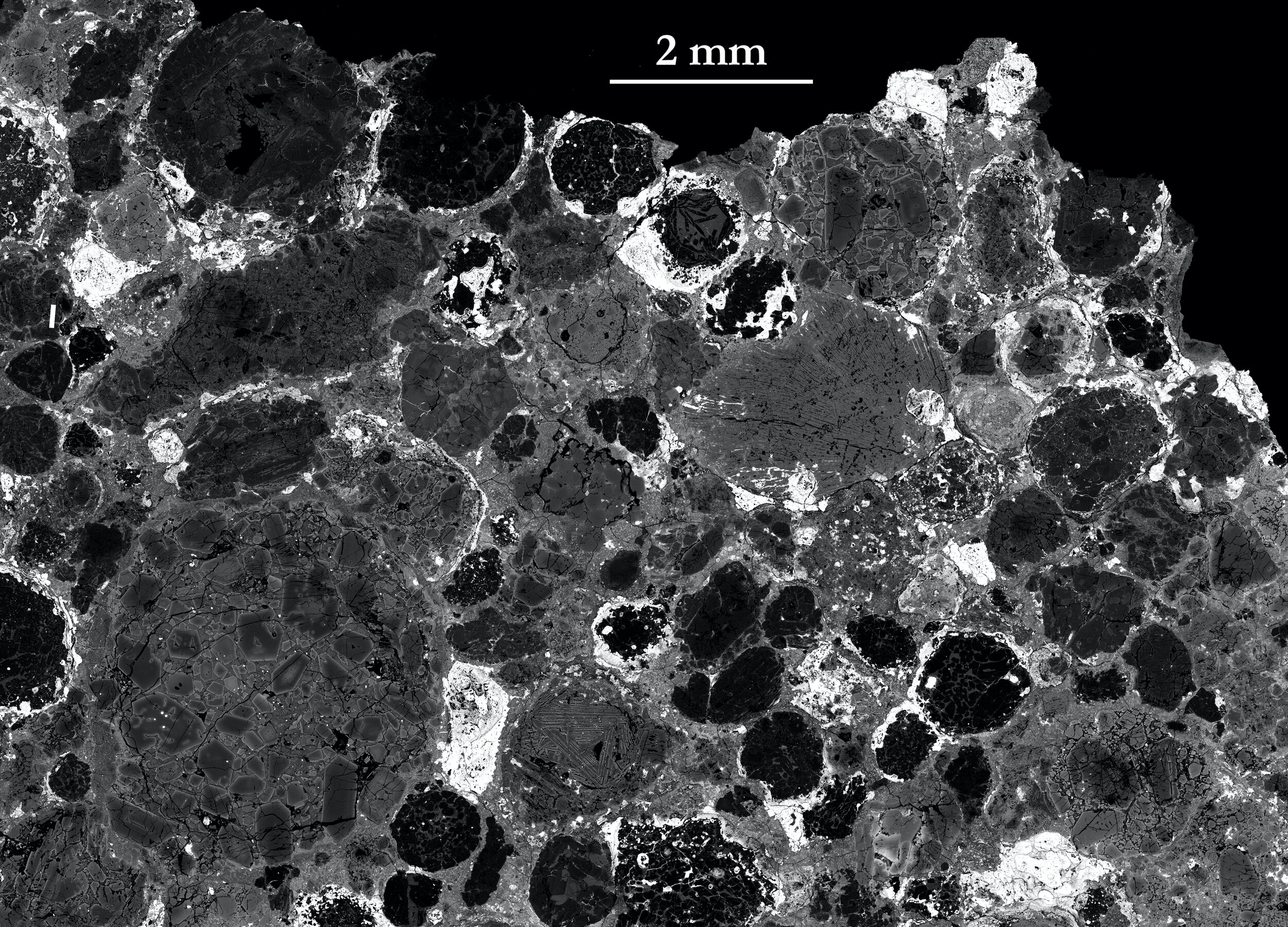
Northwest Africa 8276: ordinary (L) chondrite
A scanning electron microscope image of the Northwest Africa 8276 ordinary chondrite. It is, like most ordinary chondrites, made almost entire from spherical chondrules.
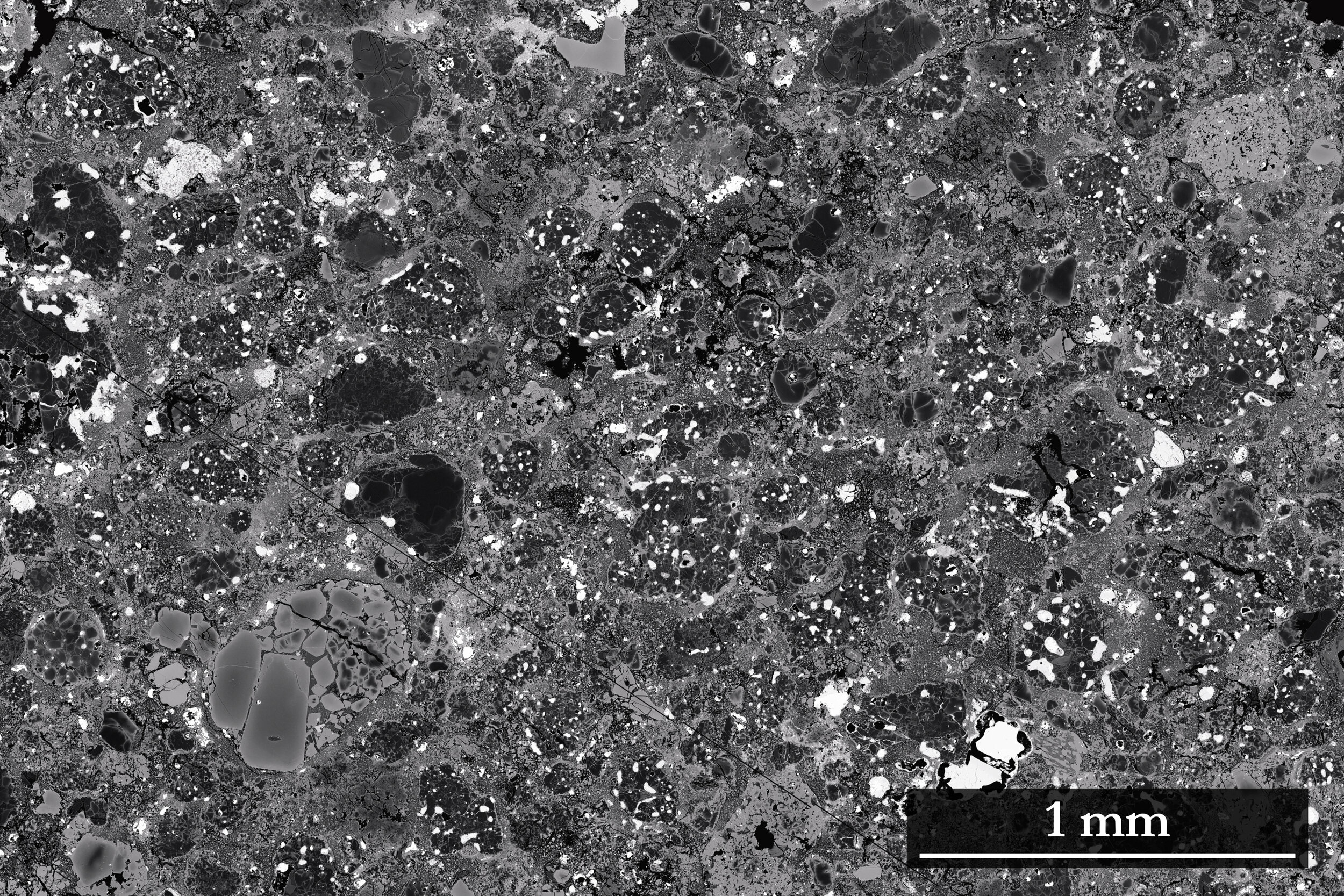
Felix: carbonaceous (CO) chondrite
A scanning electron microscope image of a carbonaceous chondrite called Felix. This meteorite was a focus of my PhD research. Like most other carbonaceous chondrites, it is made from innumerable motes of rocky dust. This dust is the primordial material from which asteroids, comets, and planets coalesced 4.6-billion-years ago.
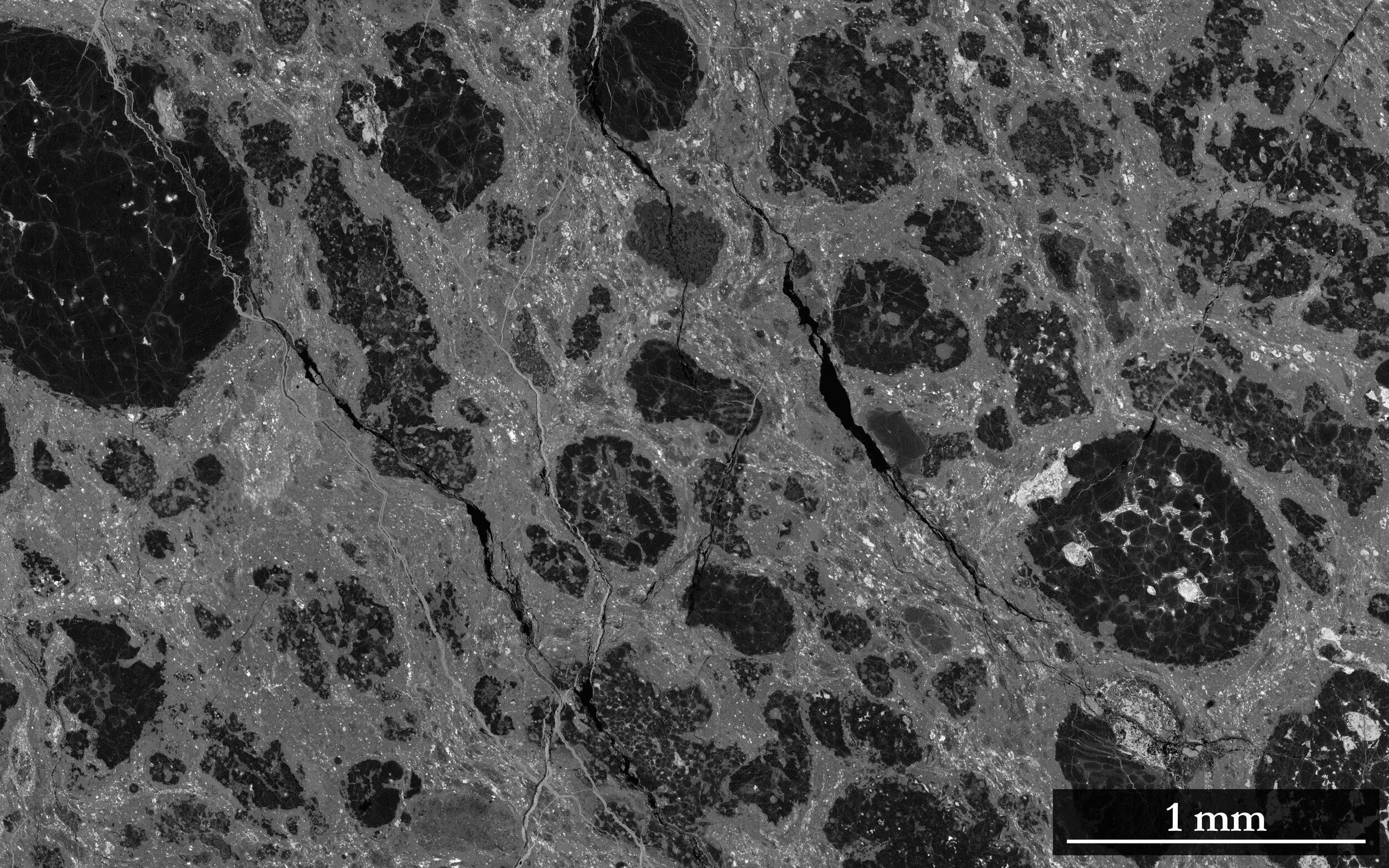
Northwest Africa 4502: carbonaceous (CV) chondrite
A scanning electron microscope image of a carbonaceous chondrite called Northwest Africa 4502. This meteorite was a focus of my PhD research. Like most other carbonaceous chondrites, it is made from innumerable motes of rocky dust. This dust is the primordial material from which asteroids, comets, and planets coalesced 4.6-billion-years ago.
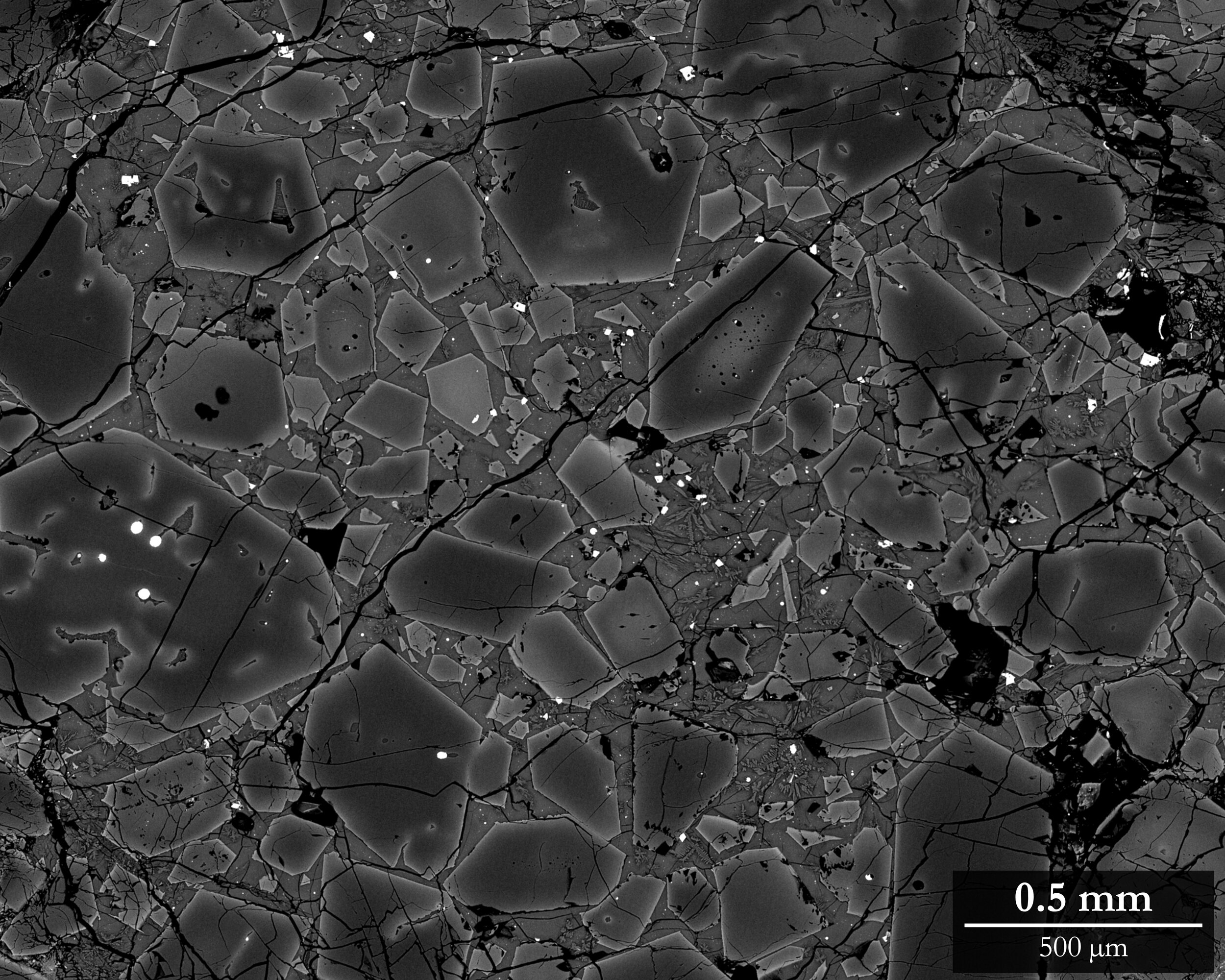
Chondrule glass in Northwest Africa 8276 (ordinary (L) chondrite)
A close-up view of a chondrule. A sea of glass encases beautiful crystals of olivine.

Northwest Africa 10256: carbonaceous (CV) chondrite
A thin section of the Northwest Africa 10256 carbonaceous chondrite. It is made from motes of dust that coalesced to form asteroids, comets, and planets some 4.6-billion-years ago. It has been partially reworked by the action of extraterrestrial water.
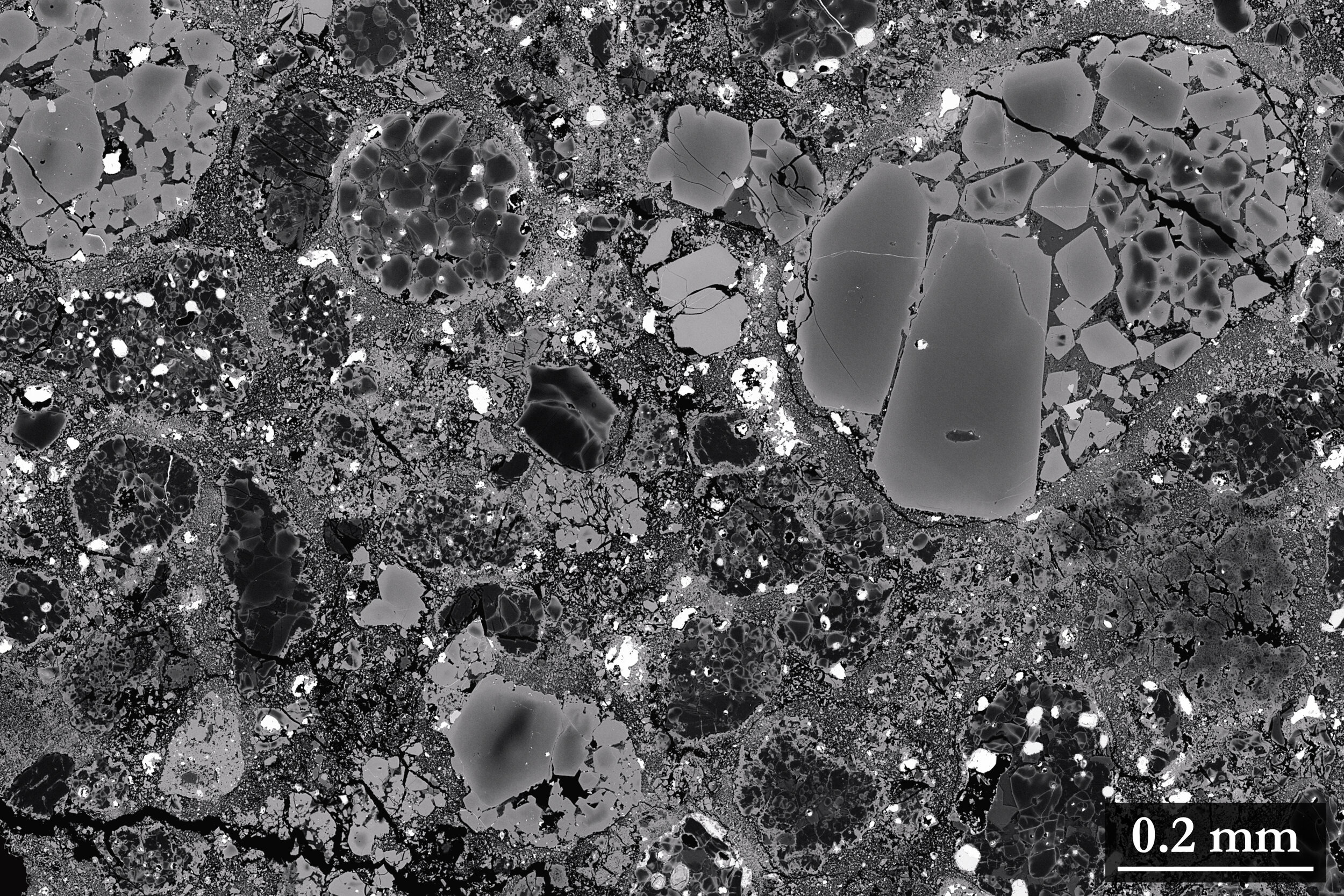
Felix: carbonaceous (CO) chondrite
A scanning electron microscope image of a carbonaceous chondrite called Felix. This meteorite was a focus of my PhD research. Like most other carbonaceous chondrites, it is made from innumerable motes of rocky dust. This dust is the primordial material from which asteroids, comets, and planets coalesced 4.6-billion-years ago.
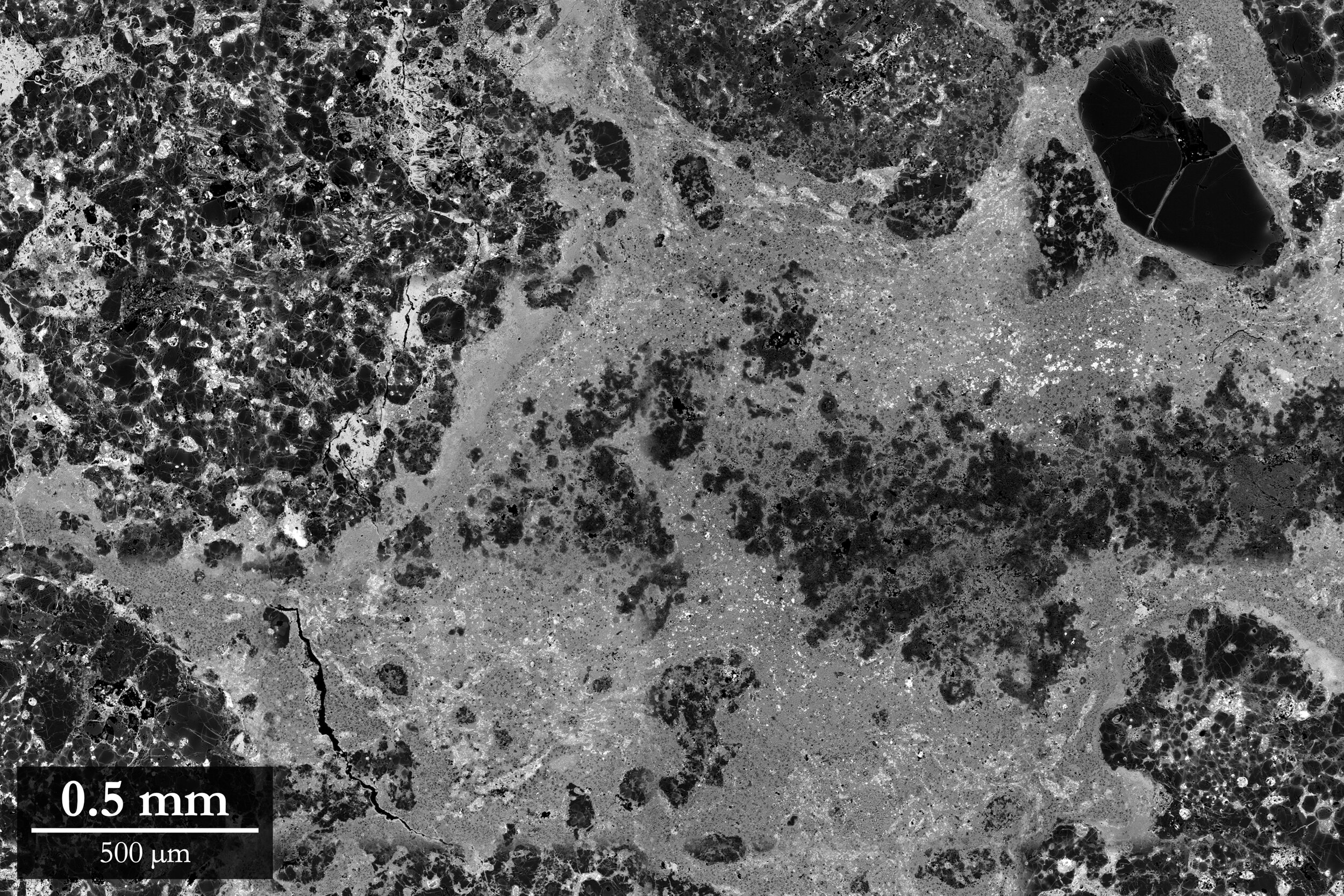
Northwest Africa 10256: carbonaceous (CV) chondrite
A thin section of the Northwest Africa 10256 carbonaceous chondrite. It is made from motes of dust that coalesced to form asteroids, comets, and planets some 4.6-billion-years ago. It has been partially reworked by the action of extraterrestrial water.
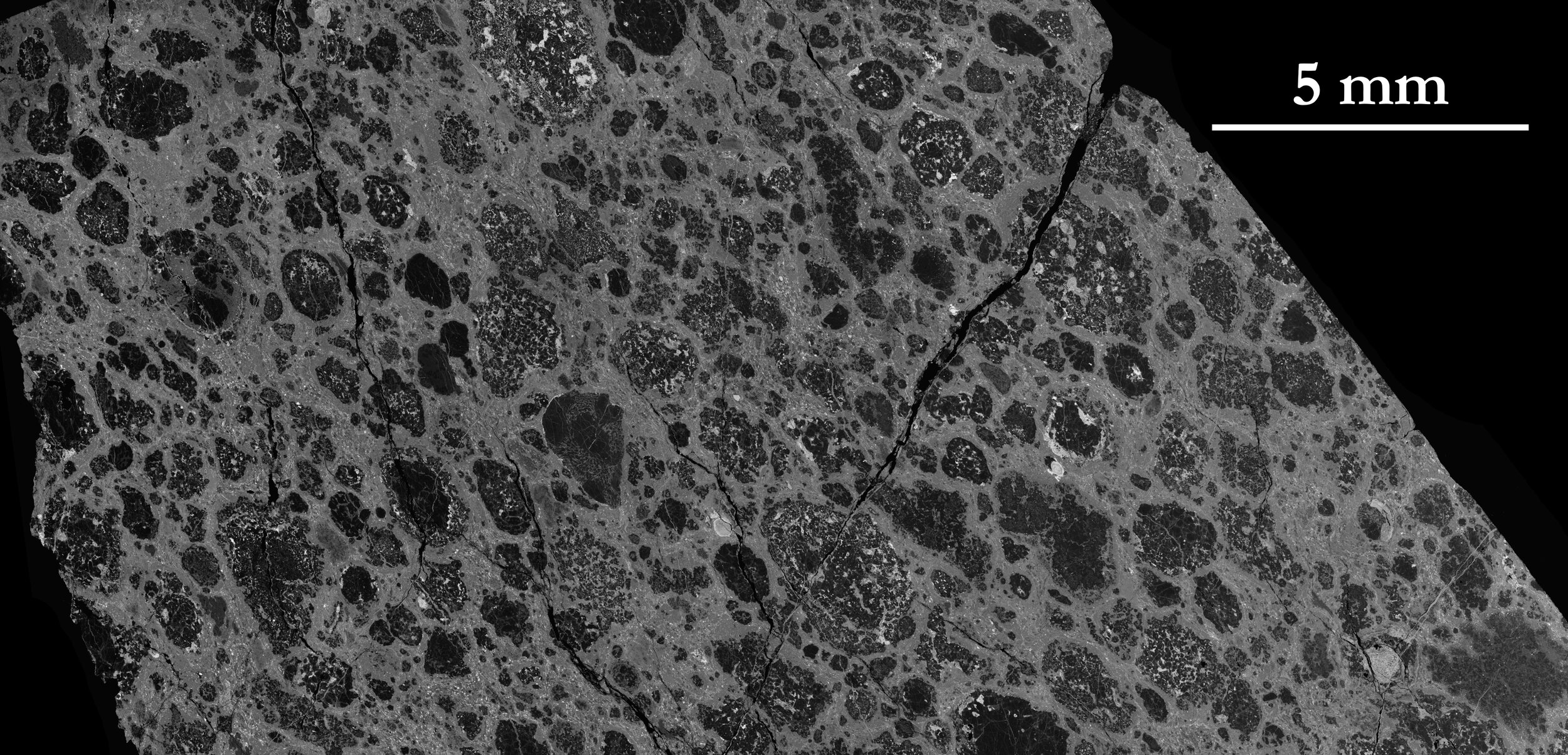
Northwest Africa 4502: carbonaceous (CV) chondrite
A thin section of the Northwest Africa 10256 carbonaceous chondrite. It is made from motes of dust that coalesced to form asteroids, comets, and planets some 4.6-billion-years ago. It has been partially reworked by the action of extraterrestrial water. This is the sample that I researched for my PhD.
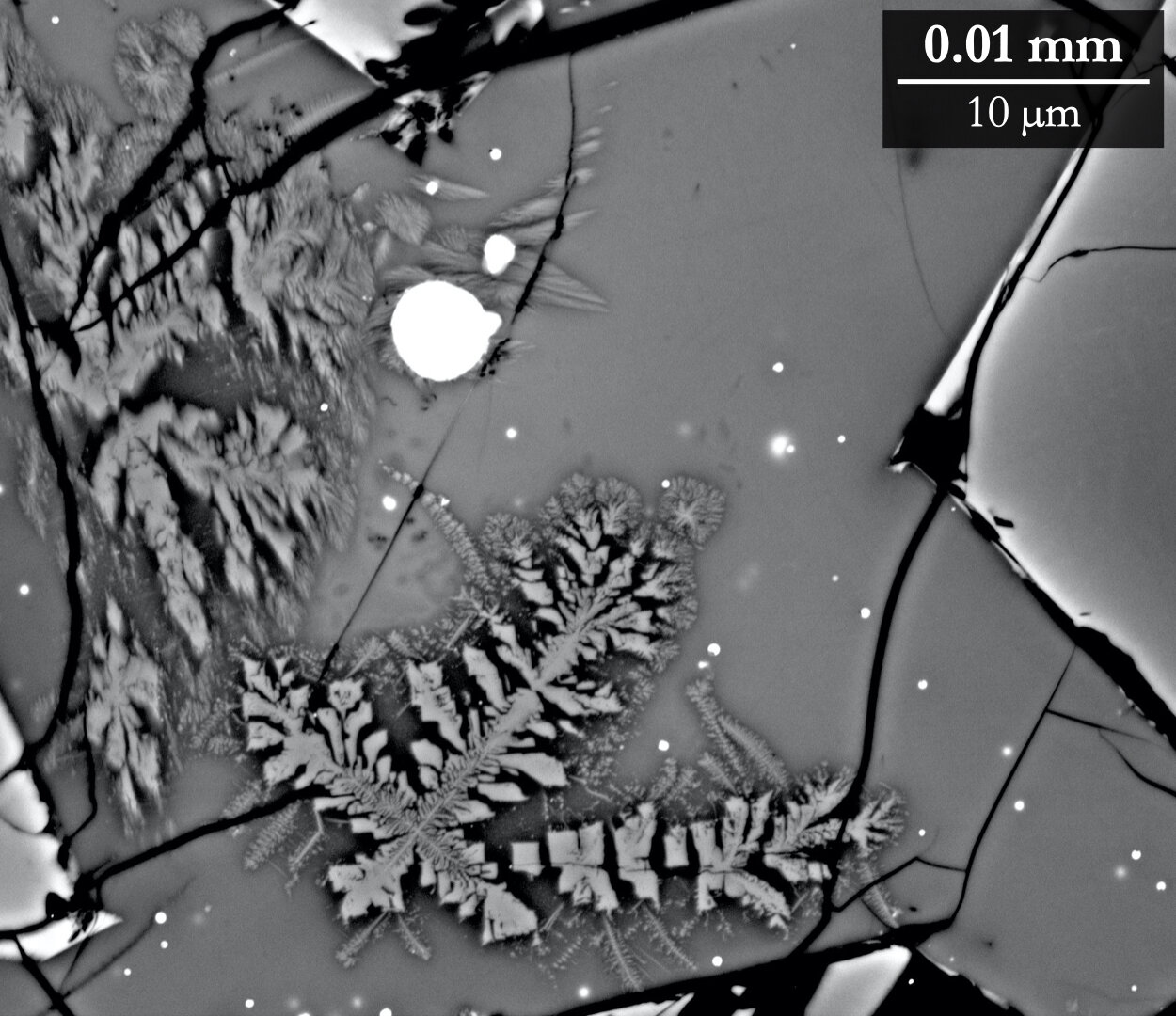
Chondrule glass in Northwest Africa 8276: ordinary (L) chondrite
The glass in this chondrule has started to re-crystallise as snowflake-like crystals of a mineral named pyroxene.
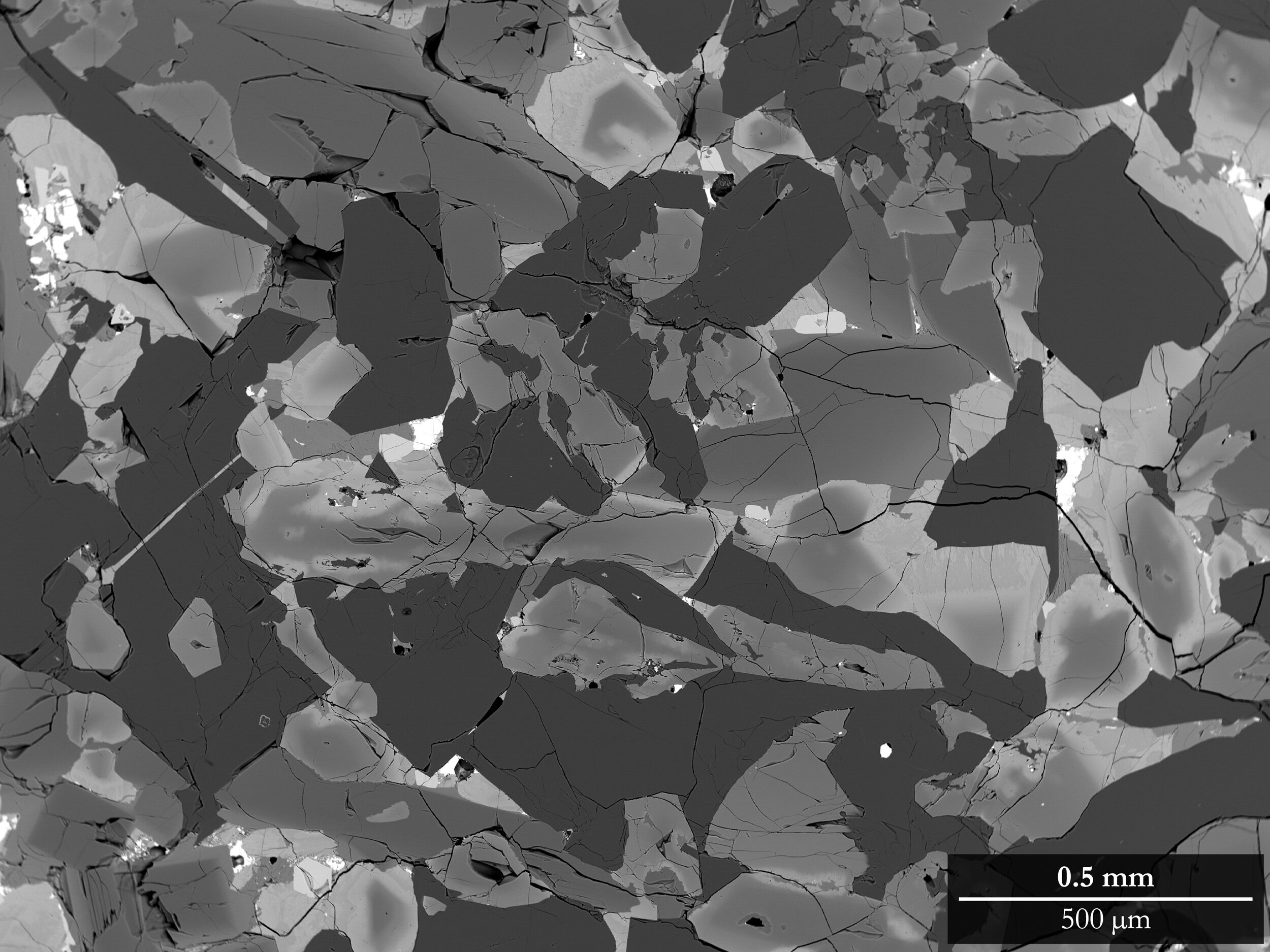
D'Orbigny: angrite
Angrites are igneous rocks that cooled and crystallised in volcanic systems of their parent asteroid. They are the oldest igneous rocks in the Solar System.
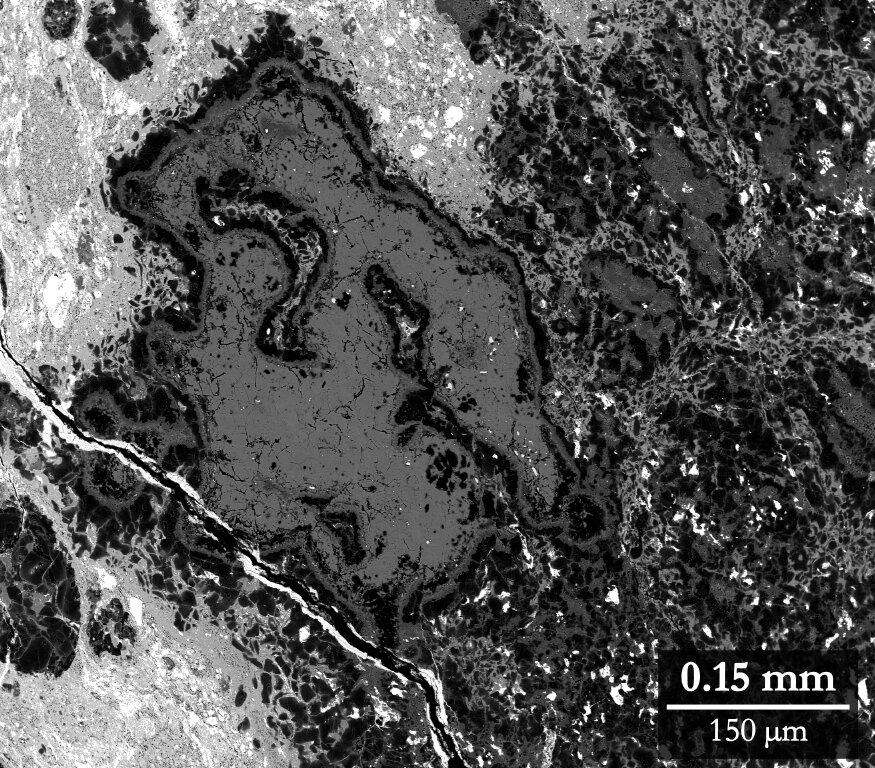
CAI in Northwest Africa 4502 (carbonaceous (CV) chondrite)
This is a CAI (calcium- aluminium-rich inclusion) from the Allende meteorite. CAIs formed next to the Sun and were the first motes of dust to form as our Solar System was assembling itself 4,567-million years ago.

D'Orbigny: angrite
Angrites are igneous rocks that cooled and crystallised in volcanic systems of their parent asteroid. They are the oldest igneous rocks in the Solar System.












